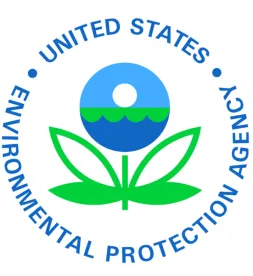In response to the increasing concerns regarding emerging viral pathogens that are not on U.S. Environmental Protection Agency (EPA)-registered disinfectant labels, EPA announced on April 7, 2016, that it was updating its Guidance regarding emerging viral pathogens. Under the Federal Insecticide, Fungicide, and Rodenticide Act (FIFRA), EPA is authorized to evaluate the efficacy of antimicrobial products intended to control pathogens that can be detrimental to public health. Many believe that the process under which registrants can identify “effective disinfectant products for use against emerging pathogens,” and the process for EPA to “permit registrants to make limited claims of their product’s efficacy against such pathogens,” have not been clear and efficient. EPA notes, for example, that “[emerging] pathogens are often unavailable commercially, and standard methods for laboratory testing may not have been developed,” such that it “can be difficult to assess the efficacy of EPA-registered disinfectants against such pathogens in a timely manner and to add these viruses to existing product registrations.”
EPA hopes that its Guidance will “expedite the process for registrants to provide useful information to the public” regarding products that may be effective against emerging viral pathogens associated with certain human or animal disease outbreaks. Comments related to clarity of this Guidance will be accepted until May 6, 2016.
EPA’s new draft Guidance document, Draft Guidance to Registrants: Process for Making Claims Against Emerging Viral Pathogens Not on EPA-Registered Disinfectant Labels, describes “a voluntary two-stage process to enable the use of certain EPA-registered disinfectant products against these emerging viral pathogens, uses not previously identified on the product label”:
-
First Stage: This stage may be performed prior to any outbreak. EPA summarizes the first stage as follows: “registrants with an eligible disinfectant product may submit a request, via label amendment, to add a designated statement to the master label and additional terms to the product registration. If the product meets the eligibility criteria suggested in this Guidance, [EPA] generally will approve the amendment. Approval of the amendment would include additional terms and conditions of registration regarding how the designated statement may be published and communicated.”
-
Second Stage: This stage would occur only during a human or animal disease outbreak caused by an emerging virus. EPA summarizes this stage as follows: “In this stage, registrants of products with the previously mentioned label amendment and terms of registration would be allowed to use the designated statement in off-label communications intended to inform the user community/public that the disinfectant product(s) may be used against the specific emerging viral pathogen. These off-label statements can inform the public about the utility of these products against the emerging pathogen in the most expeditious manner and can be more easily removed once the outbreak has ended than statements on a label.”
EPA states that this Guidance applies only to "emerging" pathogens for a disease outbreak that meet the following criteria:
-
The outbreak (for human diseases) is identified as one of three listed Centers for Disease Control and Prevention (CDC) publications or the outbreak (for animal disease) is identified as an infectious disease outbreak in animals within the U.S. on the World Organization for Animal Health (OIE) Weekly Disease Information website;
-
The CDC or OIE has "identified the taxonomy, including the viral family and/or species, of the pathogen and provides notice to the public of the identity of the emerging virus that is responsible for an infectious disease outbreak"; and
-
The virus "can be transmitted via environmental surfaces (non-vector transmission), and environmental surface disinfection has been recommended by the CDC or OIE to control the spread of the pathogen."
EPA further states that this Guidance and its expedited label amendment process apply only to products that meet both of the following criteria:
-
The product is an EPA-registered, hospital/healthcare or broad-spectrum disinfectant with directions for use on hard, porous or non-porous surfaces.
-
The currently accepted product label (from an EPA-registered product as described above) should have disinfectant efficacy claims against at least one of the following viral pathogen groupings:
a) A product should be approved by EPA to inactivate at least one large or one small non-enveloped virus to be eligible for use against an enveloped emerging viral pathogen.
b) A product should be approved by EPA to inactivate at least one small, non-enveloped virus to be eligible for use against a large, non-enveloped emerging viral pathogen.
c) A product should be approved by EPA to inactivate at least two small, non-enveloped viruses to be eligible for use against a small, non-enveloped emerging viral pathogen.
The Guidance defines what EPA considers to be a "small, non-enveloped virus," "large, non-enveloped virus," and "enveloped virus."
For registrants with eligible products, the Guidance provides instructions to submit a Food Quality Protection Act (FQPA) (fast-track, non-Pesticide Registration Improvement Act (PRIA)) label amendment request. If approved, EPA sets forth in the Guidance the statements that it will add to "the product's master label as a non-label claim permitted only when emerging viral pathogen conditions are met." Statements should adhere to one or both of the following formats:
[Product name] has demonstrated effectiveness against viruses similar to [name of emerging virus, which must be a small non-enveloped, large non-enveloped, or enveloped virus] on[eligible surface type(s)]. Therefore, [product name] can be used against [name of emerging virus, which must be a small non-enveloped, large non-enveloped, and/or enveloped virus] when used in accordance with the directions for use against [name of supporting virus(es)] on [hard, porous/non-porous surfaces]. Refer to the [CDC or OIE] website at [pathogen-specific website address] for additional information.
[Name of illness/outbreak] is caused by [name of emerging virus, which must be a small non-enveloped, large non-enveloped, and/or enveloped virus]. [Product name] kills similar viruses and therefore can be used against [name of emerging virus, which must be a small non-enveloped, large non-enveloped, and/or enveloped virus] when used in accordance with the directions for use against [name of supporting virus(es)] on[hard, porous/non-porous surfaces]. Refer to the [CDC or OIE]website at [website address] for additional information.
While these statements cannot appear on marketed (final print) product labels, they can be added to "technical literature, '1-800' consumer information services, social media sites and company websites (non-label related)." The registrant can begin incorporating these statements into materials permitted under the Guidance upon notification on the CDC or OIE websites of an outbreak of an emerging small non-enveloped, large non-enveloped, and/or enveloped viral pathogen, and must remove all such statements "no later than 24 months after the original notification of the outbreak on the CDC or OIE website unless the Agency provides guidance to the contrary due to continued public health concerns."
Discussion
The Guidance sets forth a much needed expedited label amendment process to allow registrants of qualifying registrations to seek approval proactively to add claims against categories of emerging viral pathogens to their registrations so that they are prepared to respond in the event of a disease outbreak. There are many conditions that must be satisfied for the Guidance to be applicable, however, and it will be important for registrants to ensure in reviewing and commenting on the Guidance that EPA has not overly restricted the eligible pathogens, outbreaks, and pesticide products to combat the public health concerns at issue. Additionally, EPA is proposing to allow certain statements on materials other than the product label, so that these statements "can be more easily removed once the outbreak has ended"; it will be important for companies to review and determine whether there are other potential outlets through which the use statements should be communicated.




 />i
/>i
